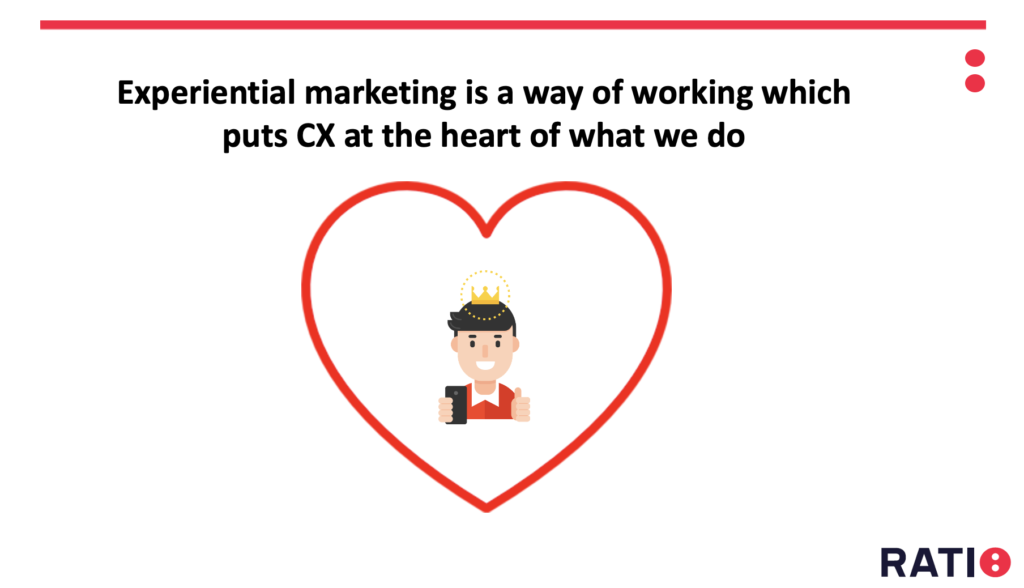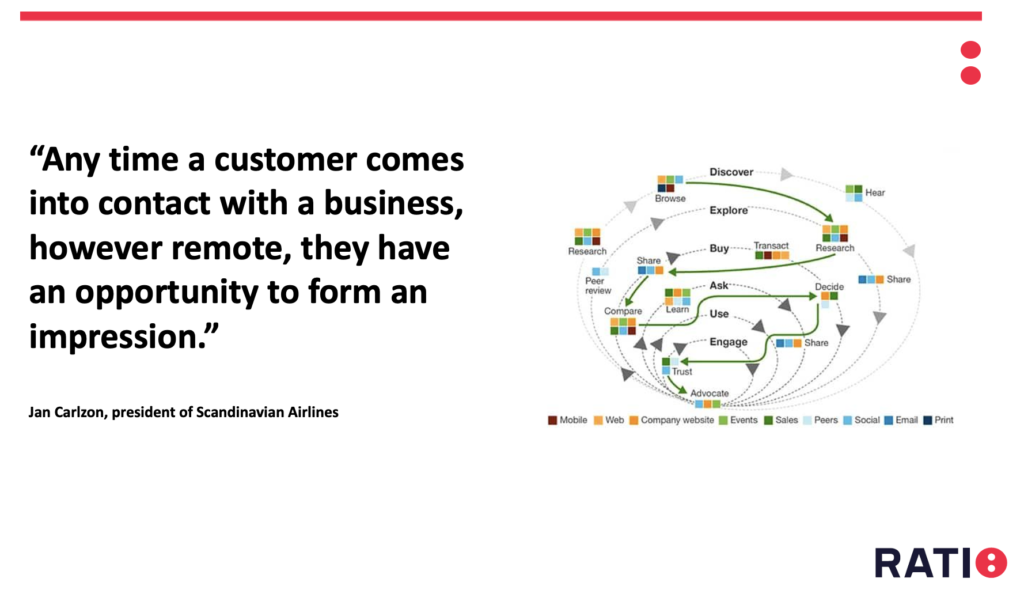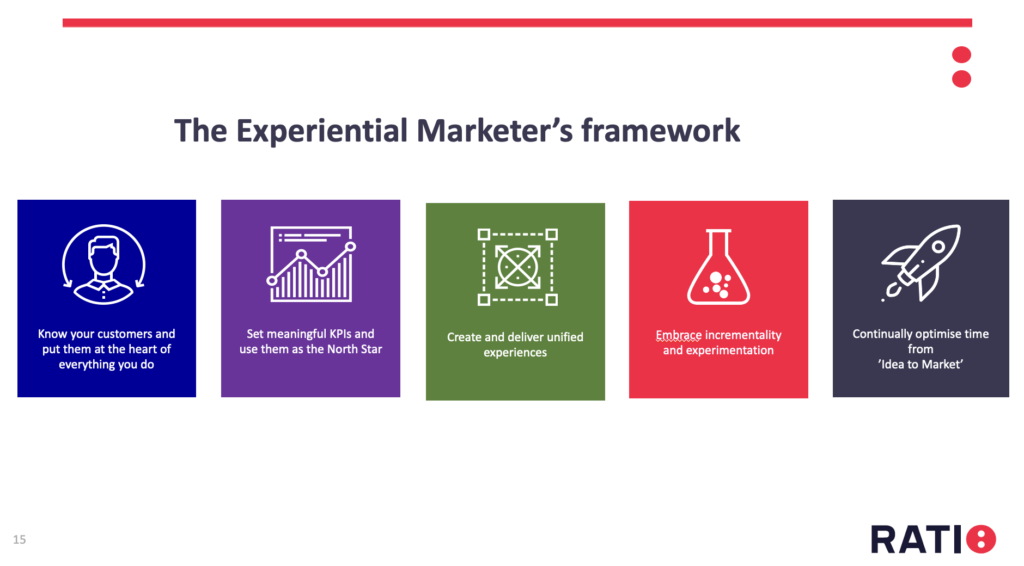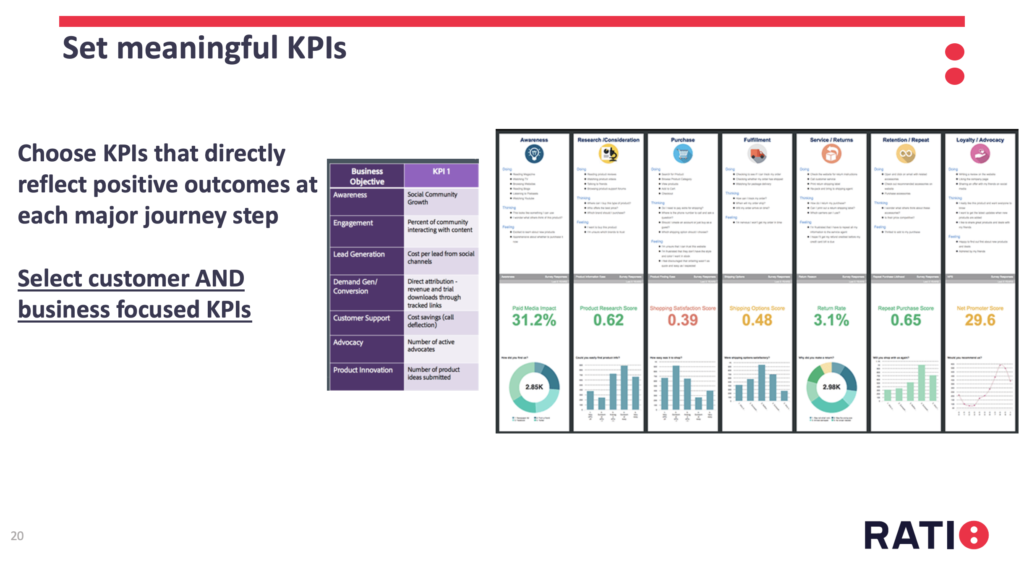Experiential marketing for better customer and business outcomes
In today’s fast-paced world of marketing, staying ahead of the competition requires a fresh approach that puts the customer experience at the forefront. Experiential marketing is the key to achieving better, faster acquisition, retention, and return on investment outcomes. In this article, we’ll delve deep into the realm of experiential marketing, its importance, and how to optimise it. We’ll explore why customer experience matters, the drivers of a great customer experience, measurement strategies, and the framework for implementing experiential marketing successfully.

Understanding customer experience
Before we dive into experiential marketing, it’s essential to understand what customer experience is and why it matters.
Customer experience is the way customers perceive their interactions with your brand. It’s the emotional connection they build with your business through various touchpoints. Every interaction, whether online or offline, is an opportunity to enhance or diminish that experience.
These moments of truth can significantly impact customer perception and influence their decisions.
In the past, customers compared their experience with competitors within the same industry. However, today’s customers compare their interactions with your brand to the best experiences they’ve ever had, whether it’s with an e-commerce giant like Amazon or a user-centric company like Apple. As a result, their expectations are higher than ever before. According to a Salesforce report, 67% of customers now demand a higher standard for a good customer experience.
This shift in customer expectations has transformed the marketing landscape. It’s no longer sufficient to have a great product or service; the experience you provide is equally important. In fact, 80% of customers believe that the experience they receive from a brand is as important as the product or service itself. Furthermore, 57% of customers have stopped buying from a company because they found another brand that offered a better experience. This demonstrates that customer experience directly impacts conversion, retention, and return on investment, making it an aspect that marketers can no longer afford to ignore.

Drivers of a great customer experience
To optimise customer experience, it’s crucial to understand the key drivers that contribute to a remarkable journey for your customers. Several frameworks and research studies provide insights into what makes an exceptional experience. For instance, KPMG’s framework for the business-to-consumer (B2C) perspective and B2B International’s framework for the business-to-business (B2B) perspective outline various factors that play a role in driving an amazing customer experience.
Here are some of the key pillars of a great customer experience:
- Personalisation: Tailoring your interactions to individual customer needs and preferences.
- Time and effort: Minimising the time and effort required for customers to achieve their goals.
- Setting expectations: Clearly communicating the steps and timelines involved in any process.
- Consistency: Ensuring a unified experience across all touchpoints.
By focusing on these factors, you can create a customer experience that resonates with your audience, meets their needs, and leads to customer satisfaction and loyalty.
Measuring customer experience
Measuring customer experience is essential to track progress and identify areas for improvement. In addition to your existing metrics, consider using the following macro measurements:
- Customer Satisfaction Score (CSAT): A survey-based metric that gauges customer satisfaction with their overall experience.
- Net Promoter Score (NPS): A metric that assesses customer loyalty and the likelihood of recommending your brand to others.
- Price-benefit map: A tool to evaluate how customers perceive your price relative to the benefits they receive, providing insights into the value you offer.
These metrics provide a broader perspective on customer experience and its impact on your brand. Regularly measuring and benchmarking these metrics allows you to monitor your progress and make informed decisions.
The framework for experiential marketing
The framework for experiential marketing is the cornerstone for any successful online business. It acts as a comprehensive guide, ensuring that every facet of your marketing strategy is geared towards delivering exceptional customer experiences.
In this section, we will delve deeper into each pillar of this framework to give you a clear and detailed understanding of how to excel in experiential marketing.

- Customer-centric approach: putting your customers first
The most fundamental pillar of the experiential marketing framework is the adoption of a customer-centric approach. This approach places your customers at the heart of every decision and action your business takes. To implement this, you should create a set of customer personas that represent your key audience segments. These personas serve as fictional characters, embodying the common needs, problems, goals, and frustrations of your customers. Although it may not be practical to personalise every interaction on a one-to-one basis, personas enable you to tailor experiences to groups with shared characteristics.
The creation of these personas is not a one-time task but an ongoing process. Regularly validate and refine these personas through in-depth customer research. Talk to your customers, conduct surveys, and analyse user behaviour to ensure that your personas remain accurate and up-to-date. By staying in touch with your customers’ evolving needs and preferences, you’ll be better equipped to deliver personalised experiences that resonate with your target audience.
- Customer journey mapping: understanding the customer’s path
Customer journey mapping is an indispensable tool for experiential marketing. It enables you to gain a deep understanding of your customers’ context and needs throughout their entire journey with your brand. This process involves identifying their goals, challenges, and the touchpoints they encounter while engaging with your business. A well-constructed customer journey map provides a visual representation of this entire process, helping you see the big picture.
By mapping out the customer journey, you can identify key moments that matter most to your customers. This includes their initial discovery of your brand, their interaction with your products or services, and their post-purchase experiences. Understanding these touchpoints allows you to tailor your communication and marketing activities effectively at each step of the journey. This level of personalisation demonstrates your commitment to addressing their specific needs and concerns, ultimately leading to a more positive and memorable customer experience.
- Prioritisation framework: identifying key areas for improvement
In any marketing strategy, it’s essential to allocate your resources effectively. To determine where to invest your efforts, adopt a prioritisation framework that considers both the importance and current performance of each touchpoint in the customer journey. Focus on areas that are both important to customers and underperforming.
Start by identifying the key touchpoints that have the most significant impact on the customer’s perception of your brand. These might include your website, social media presence, customer support, and the checkout process, among others. Once you’ve identified these touchpoints, assess their current performance by gathering data and feedback. This information will help you determine which areas are in need of improvement and optimisation.
With a prioritisation framework in place, you can strategically allocate your resources to the most critical touchpoints, ensuring that your efforts are aligned with your customers’ needs and priorities.
- Meaningful KPIs: measuring the right metrics
Key Performance Indicators (KPIs) play a pivotal role in tracking the success of your experiential marketing strategy. However, it’s crucial to select KPIs that reflect both customer and business outcomes at each step of the customer journey. These KPIs should directly measure the desired outcomes and provide data-driven insights into the effectiveness of your efforts.
For example, if your goal is to enhance the onboarding experience for new customers, a relevant KPI might be the percentage of users who complete the onboarding process. This directly correlates with the customer’s journey and demonstrates the impact of your improvements. Additionally, metrics like customer satisfaction scores (CSAT), Net Promoter Score (NPS), and customer retention rates can provide valuable insights into the overall success of your experiential marketing efforts.

By selecting meaningful KPIs, you can monitor the progress and impact of your initiatives, making it easier to adjust your strategy as needed to ensure a positive customer experience.
- Unified experience: consistency across touchpoints
Maintaining a unified and consistent experience across all touchpoints is critical in experiential marketing. It’s essential to reflect the context and customer information you have consistently, whether on your website, through customer support, or in your marketing campaigns. Inconsistencies in messaging, branding, or the overall customer experience can lead to confusion and frustration among your customers.
To achieve a unified experience, create brand guidelines that outline your brand’s voice, tone, and visual identity. Ensure that everyone in your organisation, from marketing to customer support, is well-versed in these guidelines. Use customer data to personalise interactions and messaging whenever possible, making customers feel recognised and valued at every touchpoint.
When customers can seamlessly transition from one touchpoint to another without encountering disparities in their experience, it fosters a sense of trust and reliability, ultimately enhancing the overall customer experience.
- Incrementality and experimentation: continuous improvement
The journey to improving customer experiences is an incremental process. Recognise that small, measured steps often lead to more significant improvements over time. Implement changes step by step and continuously measure their impact on the customer experience. Controlled experiments or A/B tests can provide valuable insights into what works and what doesn’t.
Avoid making assumptions about customer preferences or behaviour. Instead, use data and experimentation to drive improvement. Experimentation allows you to test new ideas, features, or marketing strategies without risking the overall customer experience. By collecting data on the performance of these experiments, you can make informed decisions about which changes to adopt and which to discard.
Embracing an incremental approach to customer experience improvements ensures that your efforts are data-driven, leading to more effective and successful experiential marketing strategies.
- Efficient time-to-market: streamlined processes
In the fast-paced world of online marketing, speed is of the essence. Efficient time-to-market is crucial for staying competitive and responsive to changing customer needs. To achieve this, centralise control within the marketing team to reduce dependencies and streamline processes.
Embrace modular marketing approaches that allow you to build on past efforts and leverage prior work for future campaigns. Develop a library of reusable assets, such as design templates, content modules, and marketing automation workflows. This not only speeds up the creation of marketing materials but also ensures consistency in branding and messaging.
Additionally, consider adopting agile marketing methodologies that allow your team to adapt quickly to changing market conditions and customer preferences. Regularly assess your processes to identify bottlenecks and areas for improvement, then take action to remove obstacles that hinder your time-to-market efficiency.
Incorporating an efficient time-to-market strategy into your experiential marketing framework will enable your business to respond rapidly to evolving customer needs and market dynamics, ensuring that your customer experiences remain relevant and engaging.
Experiential marketing is more than a buzzword; it’s a transformative approach to marketing that puts the customer experience at the forefront.
These pillars, when combined and executed effectively, will enable your business to create memorable and meaningful experiences that drive customer satisfaction, loyalty, and ultimately, business growth.
As marketers, it’s our responsibility to adapt, improve, and create experiences that resonate with our customers. In this dynamic landscape, experiential marketing isn’t just a strategy; it’s a way of working that drives transformational outcomes for your organisation. Embrace it, invest in it, and watch as your marketing efforts yield better acquisition, retention, and return on investment outcomes. Your customers will thank you for it.
If you would like to discuss how Ratio can support you with your experiential marketing strategy and implementation, get in touch with us at hello@ratiopartners.co.uk.
